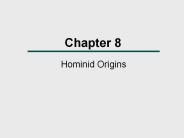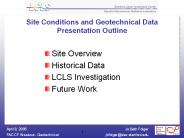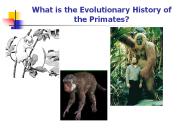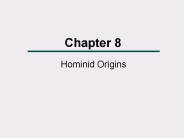Miocene PowerPoint PPT Presentations
All Time
Recommended
Miocene Hominoids. Understanding Physical Anthropology and ... frugivorous (fruits) graminivorous (grasses) Diet classifications: carnivorous (chiefly meats) ...
| PowerPoint PPT presentation | free to download
argillaceous sand and clay, rarely pure sand. Dolomite is the prominent ... slightly dolomitic, phosphatic, argillaceous sand and sandy clay with scattered ...
| PowerPoint PPT presentation | free to view
Northern Hemisphere Glaciation Traditional view based on Shackleton landmark paper. Northern Hemisphere glaciation began in late Pliocene ...
| PowerPoint PPT presentation | free to view
In the oceans, modern day currents are established. Near the end of the period the sea level drops and ... http://www.hunlodt.edu/.../Neogene/Neog Plates.html ...
| PowerPoint PPT presentation | free to view
Layer is more competent than surrounding MFF Amm3 materials ... leading to formation of an erosional bench at ... layer within a scarp in the Amm3 unit of MFF ...
| PowerPoint PPT presentation | free to download
Subglacial Landform Analysis and Reconstruction of Miocene Paleotopography of Marie Byrd Land
| PowerPoint PPT presentation | free to view
... combined allow for classification of stenotopic lineage Systema Naturae 2000 http://sn2000.taxonomy.nl/ Inca Shrew Opossum Lestoros Inca Chilean Shrew Opossum ...
| PowerPoint PPT presentation | free to download
Commonly, bedding parallel carbonate slabs show finger-like projections which ... Red lines mark the main elongation of the bedding parallel carbonate structures. ...
| PowerPoint PPT presentation | free to view
... Himalayan Plutonic Belt extending from the Kohistan batholith in the west to ... of Florida International University for providing the Ladakh batholith samples. ...
| PowerPoint PPT presentation | free to download
Poor seismic resolution ... colour graphics Data 1600 + Miocene nannofossil and foraminifer occurrences in 13 wells ... PowerPoint Presentation ...
| PowerPoint PPT presentation | free to download
HUMAN EVOLUTION: GENUS HOMO Time-Line of Hominid Evolution: 5 Adaptive Radiations First Adaptive Radiation: 6-7 mya in the late Miocene, potential last common ...
| PowerPoint PPT presentation | free to download
... Miocene Marg A 53 thru 55 Sands at 13,000 TVD Current Status: Caisson waiting on completion of WC 101 #2 well WC 204 (at left) facilities to be used ...
| PowerPoint PPT presentation | free to download
Chapter 9 Overview of the Fossil Primates Chapter Outline Introduction Primate Origins Paleocene Primate-like Mammals Eocene Primates Oligocene Primates Miocene ...
| PowerPoint PPT presentation | free to download
Chapter 8 Hominid Origins Chapter Outline Early Primate Evolution Miocene Fossil Hominids Definition of Hominid The Bipedal Adaptation Biocultural Evolution: The ...
| PowerPoint PPT presentation | free to download
Unit Four Evolutionary History of Lineages and Biotas Biotic Interchanges can repeat through time Fig. 10.33 Pleistocene Pliocene Late Miocene Biotic Interchange ...
| PowerPoint PPT presentation | free to view
... direct heat direct heat, balneology Favorable conditions due to Miocene basin formation Average terrestrial heat-flow: 100 mW/m2 Geothermal gradient: ...
| PowerPoint PPT presentation | free to download
Examining the genealogical relationships and distribution of molecular ... Molecular clock: 1.66 2.6% per My for crustacean mtDNA. 10 6 Mya (late Miocene) ...
| PowerPoint PPT presentation | free to view
Laterisation process Upper Cretaceous to Eocene/Miocene. Cretaceous: ophiolite complex , igneous intrusiva. Upper Triassic: dolomitic limestone ...
| PowerPoint PPT presentation | free to view
Site Conditions and Geotechnical Data Presentation Outline Site Overview Historical Data LCLS Investigation Future Work SLAC Site Geologic Overview Miocene Ladera ...
| PowerPoint PPT presentation | free to download
... and Philippine Sea Plate origin have a common stratigraphic history after the early Miocene. ... The Australian-Philippine Sea plate boundary has been a ...
| PowerPoint PPT presentation | free to view
The orbitoids are a Late Cretaceous to Miocene group of 'larger foraminifera' ... Patellina has a trochospiral to biserial test in which the chambers are ...
| PowerPoint PPT presentation | free to view
Tertiary Cenozoic- A. Subduction of the Farallon plate continues into Miocene epoch. ... Tertiary Cenozoic ... Late Cenozoic- A. Tahoe Basin ...
| PowerPoint PPT presentation | free to view
Atelinae (spider, wooly, howler, wolly spider) Pithecinae (saki, bearded ... Largest monkey at La Venta. Resembles Alouatta (howler) The Miocene of Patagonia ...
| PowerPoint PPT presentation | free to view
THE INEXISTENT ISLAND! According to the testimony of the fossils we know that from the Permian, 260 milion years ago, to the Upper Miocene, 6.5 milion years ago, the ...
| PowerPoint PPT presentation | free to view
Seismology is the study of earthquakes ... Earthquakes are associated with ... The compression forces in the Great Basin changed to extension by Miocene. CNSB ...
| PowerPoint PPT presentation | free to view
Township based on a horizontal line called baseline ... Paleocene. 37 to 58 my. Eocene. 24 to 37 my. Oligocene. 5 to 24 my. Miocene. Cenozoic. 2 to 5 my ...
| PowerPoint PPT presentation | free to view
Over time, as the two populations come to differ from each other, speciation ... Are Miocene apes the missing link between humans and other African apes? ...
| PowerPoint PPT presentation | free to view
Title: PowerPoint Presentation Author: Timothy G. Roufs Last modified by: troufs Created Date: 6/25/2000 8:57:16 PM Document presentation format: On-screen Show
| PowerPoint PPT presentation | free to download
Lakes, Rivers, Streams, and Groundwater * * The volume of siliciclastic sediments deposited on the Florida platform was low as evidenced by carbonated depostion that ...
| PowerPoint PPT presentation | free to download
Florida Groundwater and Hydrogeology
| PowerPoint PPT presentation | free to download
General Features / Trends of Apes / Humans ... a small gibbon-like ape. Humankind Emerging, 7th ed., p. 179. Propliopithecus. Oligocene ...
| PowerPoint PPT presentation | free to download
Title: Kottak Subject: Anthropology / Cultural Anthropology Author: Linda Crane Last modified by: Debbie Created Date: 4/19/2001 6:09:34 PM Document presentation format
| PowerPoint PPT presentation | free to download
The Cenozoic era is the time that the world took on its modern form. ... Vivveravus, a small Mongoose-like carnivore from. the Eocence of North America. Eocene ...
| PowerPoint PPT presentation | free to download
... Cartilage skeleton No more around Just teeth to go by Multiple theories Theory #1 Temperature based growth Theory #2 Diet reduction ... org/paleo/2007_2 ...
| PowerPoint PPT presentation | free to download
PALYNOLOGY. Environmental Sequence. Global Climate Change. Tectonism ... elevation on vegetation & palynology ... dates for Palynology sequence. Horseshoe ...
| PowerPoint PPT presentation | free to view
Chapter 19 The Neogene World
| PowerPoint PPT presentation | free to view
Geologic Setting of the Upper Nehalem Watershed Framework for Geomorphic Analysis and Habitat Assessment Cristina Francisco Earth & Physical Science Dept. Western ...
| PowerPoint PPT presentation | free to download
Young Drowned Carbonate Platforms in the Florida Straits
| PowerPoint PPT presentation | free to view
What is the Evolutionary History of the Primates? 1. EOCENE 54-38 mya. Prosimian Radiations ... branched off from the prosimians much earlier than previously ...
| PowerPoint PPT presentation | free to download
Title: Granites and collisions Author: Information Technology Last modified by: Information Technology Created Date: 4/6/2006 1:53:40 PM Document presentation format
| PowerPoint PPT presentation | free to view
It is particularly developed to the south of a line that runs from Siwa to Wadi ... declining or even ceasing its flow for reasons of tectonic and climatic changes ...
| PowerPoint PPT presentation | free to view
... chimpanzees, and humans ... Characteristics Revised Classification of Hominoids The Bipedal Adaptation Efficient bipedalism as the primary form of locomotion ...
| PowerPoint PPT presentation | free to download
Mudstone channel fills encased in tabular beds of sand. ... porcellanous (miliolid) forms occur in lower to middle marsh, and may occur down ...
| PowerPoint PPT presentation | free to view
Lecture 12 General history of foraminifera and their applications General history of foraminifera Principle steps in the evolution of the foraminifera.
| PowerPoint PPT presentation | free to view
| PowerPoint PPT presentation | free to view
From 1962 to 2001, the average growth rate reached 5% per year ... CARBONIFEROUS. DEVONIAN. S. N. Entreprise Tunisienne d'Activit s P troli res. NAPE 2004 Int. ...
| PowerPoint PPT presentation | free to view
Groundwater-sapping Origin for the Giant Quebradas. of ... Pica. Digital Elevation Model (DEM) and Climate (GTOPO30) (InSAR) Atamaca Desert (age: ~14 Ma) ...
| PowerPoint PPT presentation | free to view
Title: Granites and collisions Author: Information Technology Last modified by: Information Technology Created Date: 4/6/2006 1:53:40 PM Document presentation format
| PowerPoint PPT presentation | free to view
Earth's Dipole Field. Magneto-bio-stratigraphy. Marine Magnetic Anomalies ... The magnetic signal in rocks: how to find the primary component? Paleomagnetism: ...
| PowerPoint PPT presentation | free to view
Figure 3.1 Paleozoic amphibians, Crassigyrinus (group, incertae sedis) and Diplocaulus (Nectridea). Adapted from Milner et al., 1986, and Milner, 1980.
| PowerPoint PPT presentation | free to download
Understanding Physical Anthropology and Archaeology, 9th ed., p. 103. Understanding Physical Anthropology and Archaeology, 9th ed., p. 103. note climactic change ...
| PowerPoint PPT presentation | free to download
Title: Slide 1 Author: Computing & Information Services Last modified by: Furman User Created Date: 5/18/2006 2:49:30 PM Document presentation format
| PowerPoint PPT presentation | free to download
Title: Chapter 17 Author: user Last modified by: Tim Heffernan Created Date: 3/10/2006 2:05:47 AM Document presentation format: On-screen Show Company
| PowerPoint PPT presentation | free to download
Andrzej Tatur Department of Antarctic Biology Polish Academy of Sciences operator of Arctowski stati
| PowerPoint PPT presentation | free to download
Biogeographic Range Biological Distributions Cartographic and database problems Restricted ranges: endemics Separated ranges: disjuncts Widespread ranges: cosmopolitans
| PowerPoint PPT presentation | free to download
Brain size barely larger than modern chimp. Bi-pedal, but spent much time in trees ... Looked similar to modern humans, but: Slightly smaller brain (1000 cm3 vs ...
| PowerPoint PPT presentation | free to view
























































